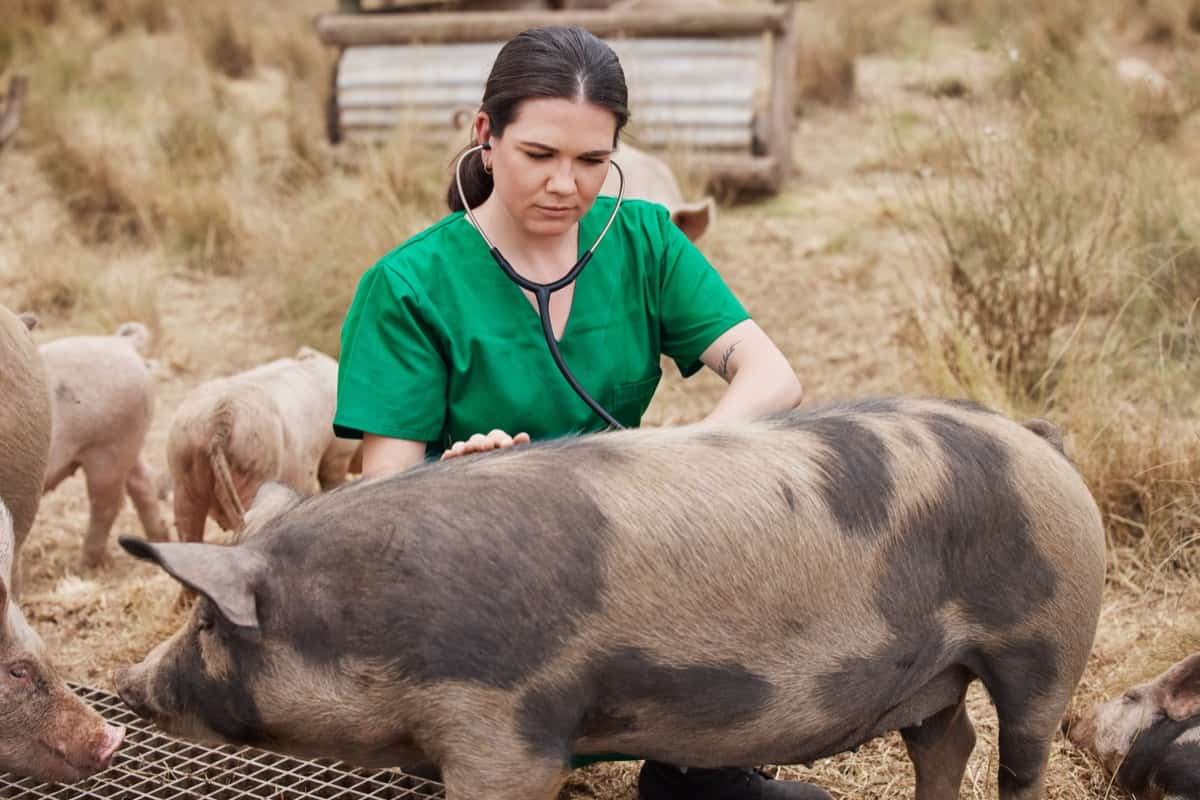- This topic is empty.
- AuthorPosts
- March 5, 2025 at 2:13 pm #580148

Pig farming has become a vital part of the global agricultural industry, providing a source of meat for billions of people worldwide.
Successful pig farming is not just about raising pigs; it involves understanding their needs, optimizing their living conditions, and ensuring they receive proper nutrition and care.
In this article, we will explore the key elements that contribute to successful pig farming, from selecting the right breeds to managing feed, housing, and health.
A comprehensive approach to pig farming is crucial for both the well-being of the pigs and the profitability of the operation.
1. Choosing the Right Breeds for Pig Farming
One of the first steps in successful pig farming is selecting the right breed for your operation. The choice of breed depends on various factors, such as climate, farm size, and market demand.
Common commercial pig breeds include Yorkshire, Landrace, and Large White, which are known for their high reproductive rates, fast growth, and good meat quality.
Some farmers may choose specialized breeds for specific purposes, such as the Berkshire for high-quality pork or the Tamworth for outdoor systems.
The right breed should align with your farming goals, whether it’s for efficient meat production, breeding purposes, or a more sustainable, organic approach.
2. Managing Pig Nutrition and Feed
Proper nutrition is at the heart of a successful pig farming operation. A well-balanced diet ensures that pigs grow at the desired rate, stay healthy, and produce high-quality meat. The type of feed used will depend on the age, weight, and production stage of the pigs.
For piglets, a high-protein starter feed formula is necessary for growth, while adult pigs require a diet that supports maintenance and fattening.
The feed should include a mix of carbohydrates, proteins, fats, vitamins, and minerals, ensuring the pigs receive all the essential nutrients.
Farmers may also consider adding supplements like probiotics or fiber to enhance digestion and health. Good feed management involves monitoring feed intake, adjusting formulations based on seasonal or growth stage changes, and ensuring that pigs have access to clean, fresh water at all times.
3. Providing Adequate Housing and Space
Housing is another crucial aspect of pig farming. Pigs are social animals, and their living conditions significantly impact their health, growth, and behavior. Proper housing should provide enough space for the pigs to move freely, reducing stress and the risk of disease.
Indoor systems are commonly used for their ability to provide temperature control, while outdoor systems may be preferred for more sustainable, free-range operations.
Regardless of the housing system, it’s essential to ensure that pigs have access to comfortable bedding, protection from extreme weather, and proper ventilation to maintain a clean, dry environment.
Overcrowding can lead to health problems and increased aggression, which is why space management should be carefully considered.
4. Maintaining Health and Preventing Disease
One of the major challenges in pig farming is maintaining pig health and preventing diseases. Pigs are susceptible to a variety of infections, including respiratory illnesses, digestive disorders, and external parasites.
Vaccination programs are essential to protect pigs from common diseases such as swine fever, porcine reproductive and respiratory syndrome (PRRS), and foot-and-mouth disease.
Biosecurity measures, including quarantine for new animals and strict cleanliness protocols, are critical to prevent the introduction and spread of diseases on the farm. Regular health checks and monitoring are essential to catch health issues early and take preventive measures.
In addition, farmers should ensure that pigs have access to clean water and a balanced diet, as nutrition plays a vital role in immune system function.
5. Sustainability and Environmental Considerations in Pig Farming
In recent years, there has been increasing emphasis on sustainability in pig farming. Environmental concerns, such as waste management, water usage, and the carbon footprint of farming practices, have led to calls for more sustainable pig farming methods.
Proper waste disposal systems, such as composting or biogas production, can reduce the environmental impact of pig farming. Farmers may also adopt practices like rotational grazing or using organic feed to improve sustainability.
Furthermore, energy-efficient housing systems, waste-to-energy technologies, and the reduction of water usage in operations are all part of sustainable farming practices that can help mitigate the environmental impact of pig farming while ensuring long-term profitability.
In conclusion, pig farming is a multifaceted endeavor that requires careful attention to detail and a comprehensive approach. From selecting the right breeds to managing nutrition, housing, health, and environmental factors, each aspect of the operation contributes to its overall success.
A commitment to best practices in pig farming can lead to healthier pigs, better productivity, and a more sustainable farming operation, making it a rewarding and profitable venture for farmers.
By focusing on the well-being of the pigs and continuously improving farming methods, pig farmers can thrive in an increasingly competitive and environmentally conscious agricultural landscape
Read Also: Pig Starter Feed Formula: Understanding the Essentials for Healthy Piglets
- AuthorPosts
- You must be logged in to reply to this topic.

